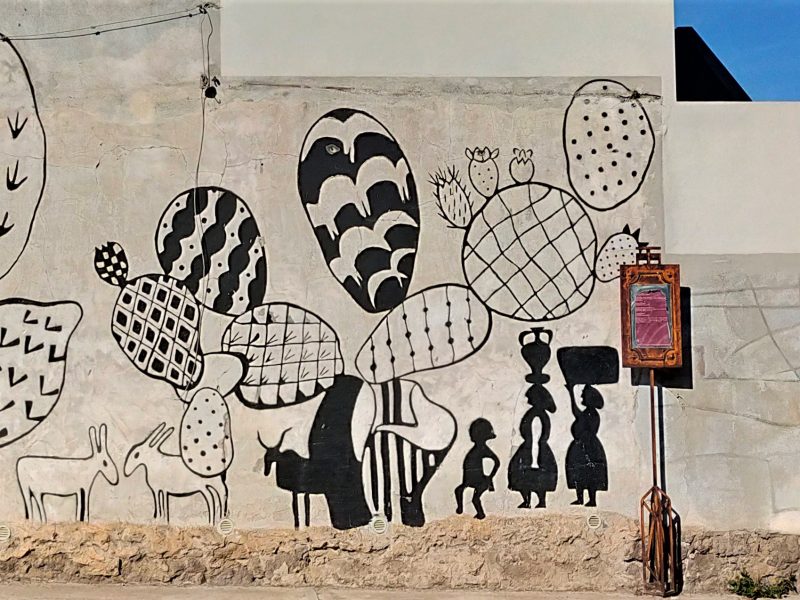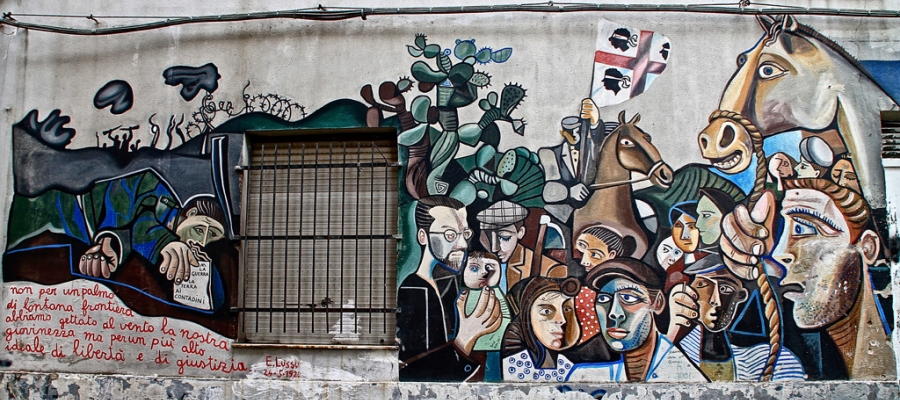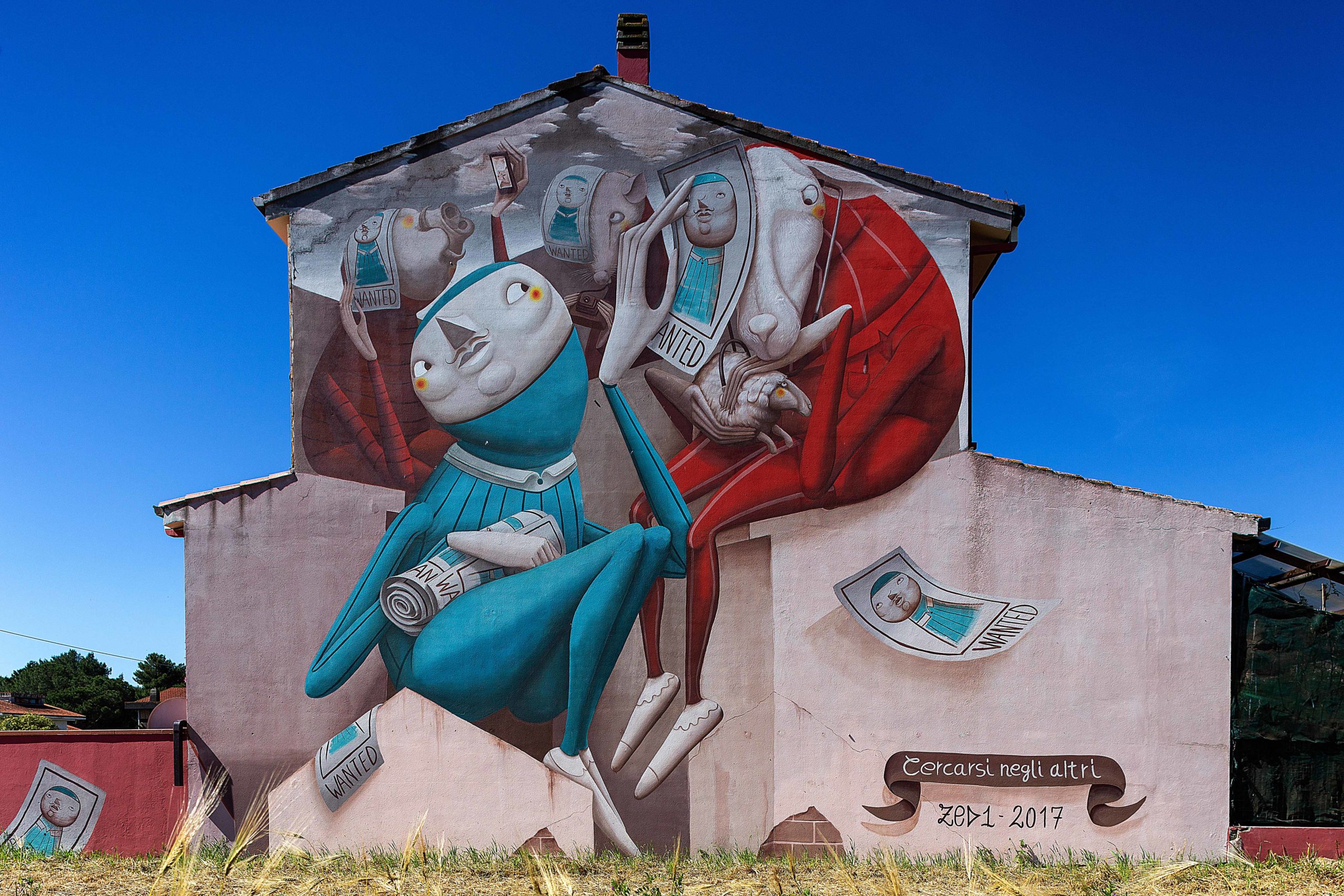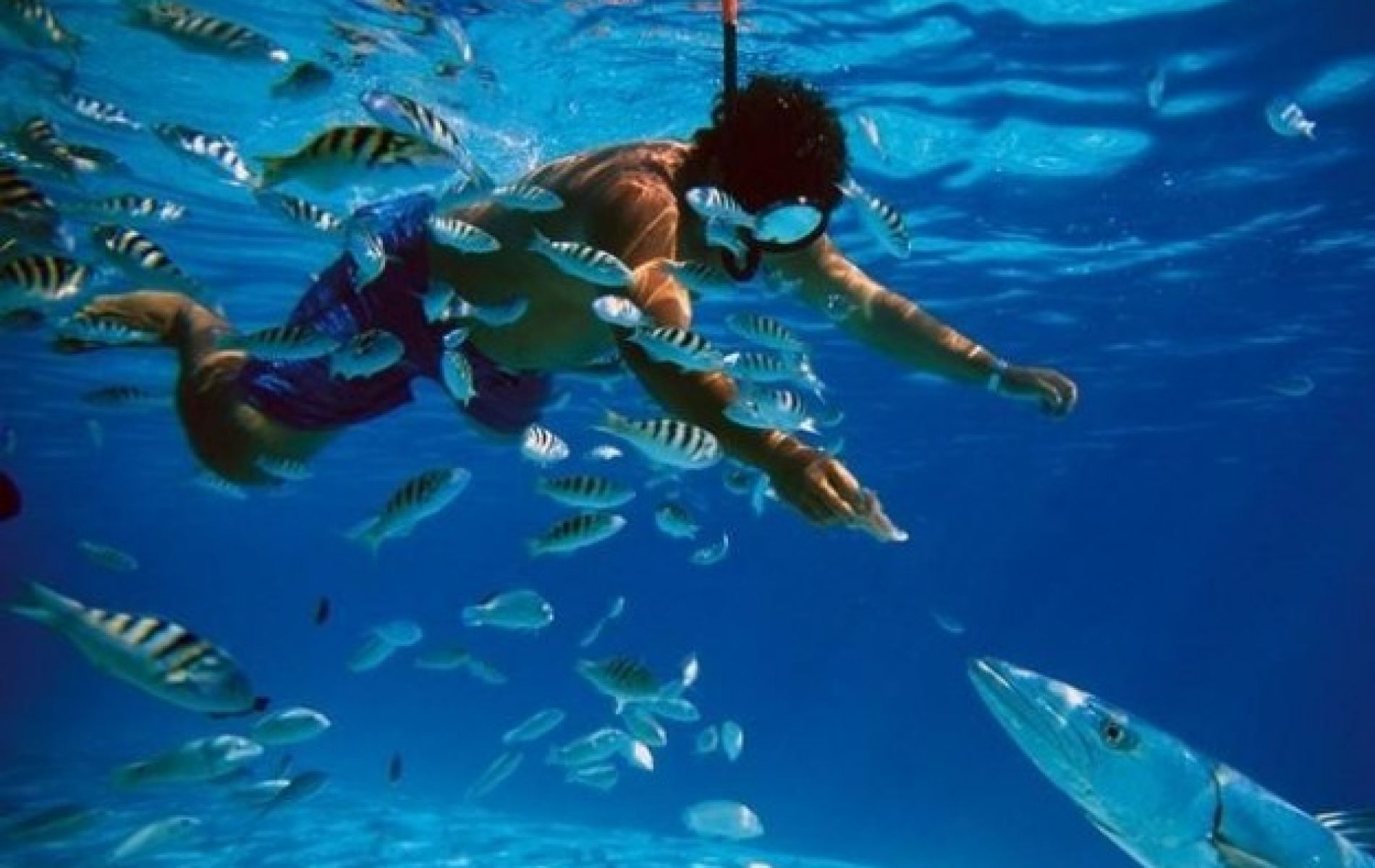Tiscali and the timeless charm of the nuragic village of Dorgali
Hidden in the heart of the Supramontesuspended between history and legend, the Nuragic village of Tiscali is one of the most mysterious and evocative places in the Eastern Sardinia. A site archaeological embedded within a sinkhole on summit of Mount Tiscaliwhich still fascinates travellers, scholars and nature lovers today. This article will guide you through its thousand-year history, its special location, the landscape in which it is set and the curiosities that make it unique. Reading it, you will understand why the Tiscali village is a must for those who like to combine trekking, culture and breathtaking landscapes.
Where Tiscali is and why it is so special
The Tiscali village is located on the border between the Supramonte of Oliena and the Supramonte of Dorgaliin a position that in itself tells a lot about his past. His localisation within a sinkhole natural makes it a place sheltered and protected from the weatherdifficult to detect from the outside and strategic for defence. Access is via impervious paths, such as the famous steep staircase of Surtana or the way a ledge suspended over the valley. This position has, over the centuries, made it a safe haven for people who populated the centre-east of the island in ancient times.
During the Roman conquest of Sardiniathe site was used as refuge of the Sardinians resisting domination. It is a civil settlement and not a military structure, but its natural conformation allowed for dominate the valley below, guaranteeing safety.
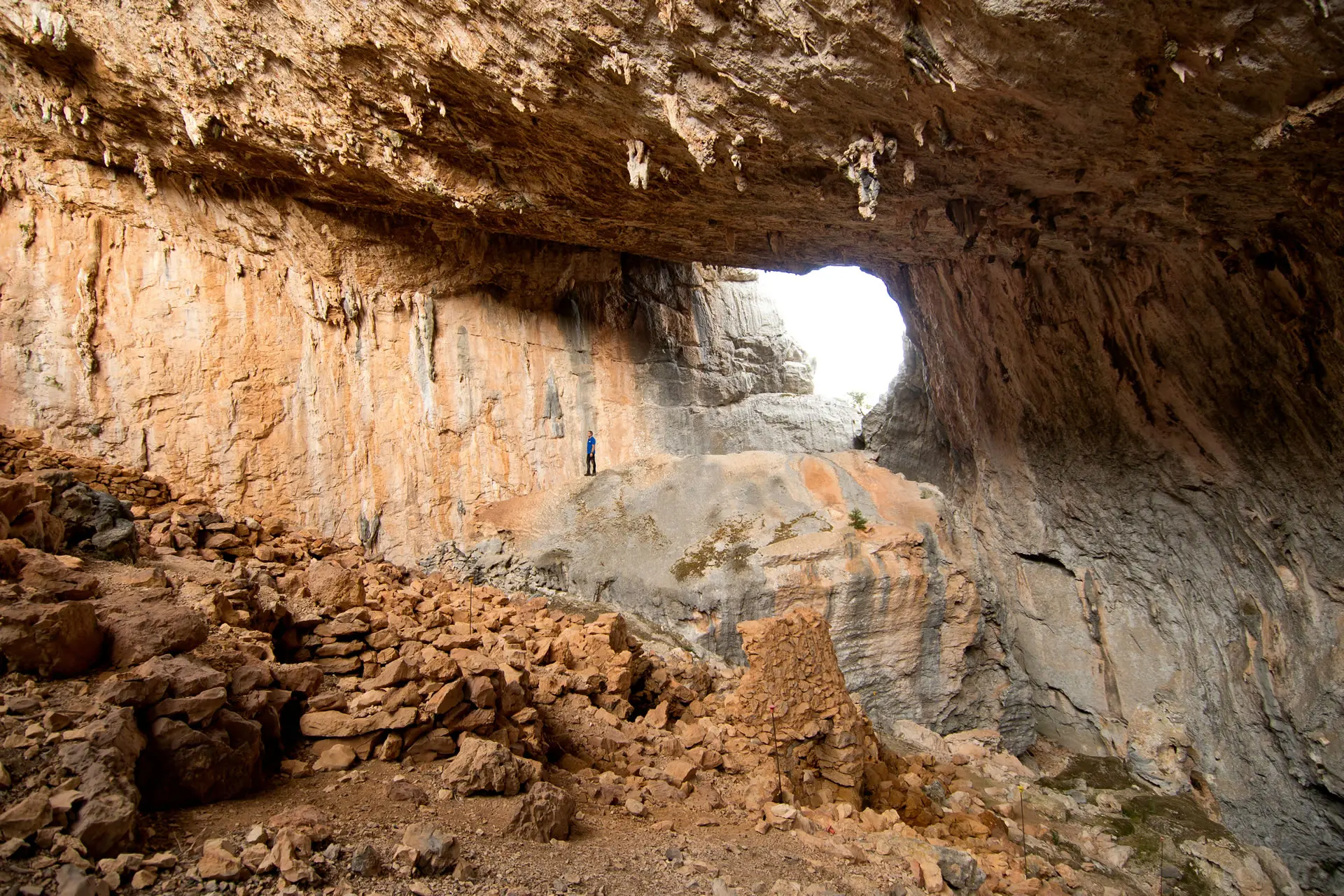
The history of the nuragic village of Tiscali
The Nuragic village of Tiscali dates back toNuragic Ageeven if the chronological and cultural context of the archaeological evidence suggests a more complex story. Some scholars speculate that thesettlement may also have been attended during theRoman Age and up toearly middle ages. Le surface collections have allowed to recover ceramic and metal artefacts that testify to continuous use.
A fascinating aspect is that, at the time of his most intense attendance, the Nuragic civilisation had been extinct for a few centuries. This makes Tiscali a case study important for interpreting the site in relation to the Italic-Etruscan settlements and contact with Roman rule.
The housing structure and the two construction phases
L'settlement of Tiscali presents two construction phases distinct. The dwellings, called hut, are of medium and small size, realised dry with stones by freshly hewn local limestone e regularised by filling with mortar the gaps between stones. In some cases, the structures rest on a wall plinth and show circular plan or slightly elliptical.
The dwellings include cupboards and nichesprobably used to store food or utensils, and enclosures for keeping animals testifying to a agro-pastoral exploitation of the territory. In some places you can still observe frascas and facilities of modest thickness. Their state of preservation is surprisingly good considering their age.
The Supramonte landscape context
The Supramonte of Oliena and Dorgali is a scenario rugged and wild valleycharacterised by cliffscaves and deep canyons. The Mount Tiscali stands like a ridge of a mountain imposing, and to climb up there is to pass through environments of great beauty, among Mediterranean maquis and spectacular views.
La Lanaittu Valley, at the foot of the mountain, is one of the most attractive starting points to reach the village. L'car towards Lanaittu and then the footpath takes you on a journey that is as physical as it is spiritual, culminating in a place where time seems to stand still.
Archaeological discoveries and excavations in 1999
The excavations in 1999 played a key role in clarifying many aspects of Tiscali. The surface collections allowed the recovery of materials ranging from ceramic fragments to everyday objects. This confirmed that the area was used in different periods and that its function changed over time.
Archaeologists have uncovered the good state of preservation of many structures and pointed out that the site was built in a naturally sheltered and protected spotwith a entrance with lintel which served as the main passage.
The archaeology and cultural significance of the site
L'archaeological area of Tiscali is a archaeology hidden in the ridge of a mountain, which makes it unique not only in Sardinia but also in the entire Mediterranean area. It is considered a a must for enthusiasts of history and archaeologynot only for its historical value but also for its scenic charm.
From the point of view culturalthe site represents a interest in analysing the first forms of settlement post-Nuragic and for understanding the nuragic civilisation in its decline and transformation under Roman influence.
How to visit the village of Tiscali
To reach the Tiscali village it is necessary to address aexcursion of medium difficulty. It is strongly recommended relying on guides experts, both to navigate the paths of the Supramonteand to receive historical and cultural explanations directly on the spot.
The most common route starts from the Lanaittu Valleybut there are variants that also allow you to discover places such as Sa Oche e Sa Barva. During the ascent, you walk through challenging sections, but the reward is the view of the village sheltered and protected from the weather and immersed in a unique atmosphere.
Excursion tips and curiosities
The context in question will constitute always an intense experience, not only for history lovers but also for those seeking direct contact with nature. Bringing water, suitable shoes and taking the time to savour the walk are essential.
Many visitors are impressed by the harmony between the village structures and the cliff face surrounding him. It is as if thesettlement had grown organically together with the sinkholein a balance that has lasted for centuries.
A legacy to preserve
Today, Tiscali is a heritage that requires respect and care. Its good state of preservation is the fruit of centuries of isolation, but also of increasing attention from institutions, guides and enthusiasts.
The Nuragic village of Tiscali remains a symbol of cultural resistance and human ingenuity, a place where the Sardinia was annexed to the administration of Rome but continued to maintain a strong and recognisable identity.
FAQ
1. Where exactly is the Tiscali village located?
The Tiscali village is located between the Supramonte of Oliena and the Supramonte of Dorgaliin central-eastern Sardinia.
2. How difficult is it to reach Tiscali?
The hike requires good training and hiking shoes, with challenging and scenic stretches.
3. Who built the Tiscali village?
It was realised during theNuragic Agebut also used in later periods, up to theRoman Age and beyond.
4. Why is Tiscali built in a sinkhole?
La sinkhole offered protection, insulation and an ideal microclimate, making the site sheltered and protected from the weather.
5. What can you see at Tiscali today?
One can admire the ruins of the hutwall remains, cupboards and nichesand the evocative natural setting.
6. What did the 1999 excavations reveal?
They made it possible to recover findings and clarify the two construction phases of the village.
7. Need a guide to visit Tiscali?
It is not compulsory, but it is recommended relying on guides for security and historical insights.
8. What is the best season to visit?
Spring and autumn are ideal, avoiding the summer heat and enjoying greener nature.
9. Is there an entrance fee for Tiscali?
Yes, access is regulated and requires a ticket, the proceeds of which contribute to the maintenance of the site.
10. Why is Tiscali so important for Sardinia?
Because it represents a case study unique on the transition between the Nuragic civilisation and the Roman era, combining history and landscape.

